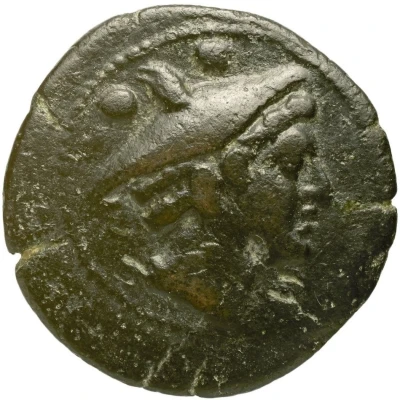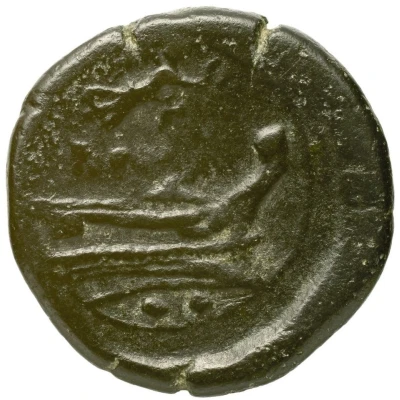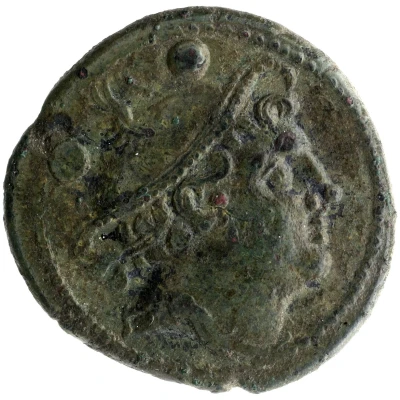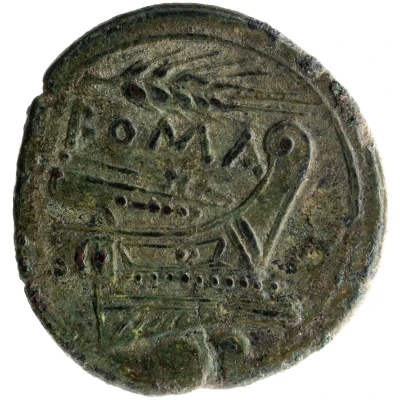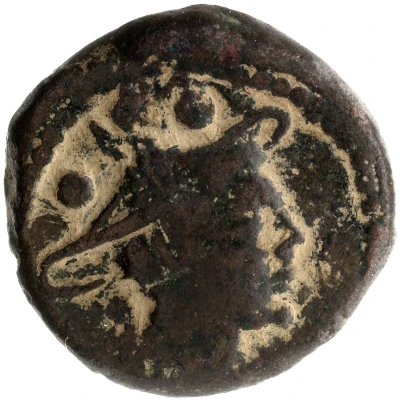


© American Numismatic Society (ANS)
Sextans KA; ROMA 211 BC - 208 BC
| Bronze | 4.82 g | 20.3 mm |
| Issuer | Rome › Roman Republic (509 BC - 27 BC) |
|---|---|
| Period | Republic (509 BC - 27 BC) |
| Type | Standard circulation coin |
| Years | 211 BC - 208 BC |
| Value | Sextans (1⁄60) |
| Currency | Denarius of 10 Asses (221 – 141 BC) |
| Composition | Bronze |
| Weight | 4.82 g |
| Diameter | 20.3 mm |
| Shape | Round (irregular) |
| Technique | Hammered |
| Orientation | Variable alignment ↺ |
| Demonetized | Yes |
| Updated | 2024-10-06 |
| Numista | N#386036 |
|---|---|
| Rarity index | 100% |
Reverse
Prow right; above, mark (corn-ear); before, mark (monogram of KA); below, inscription.
Script: Latin
Lettering:
●●
KA
ROMA
Translation: Rome
Comment
Weight varies from 4.54g-9.54gMinted in Sicily
RRC 69/6a
Obverse: Head of Mercury, right; above denominational mark (●●).
Reverse: Prow, right; above, mark (corn-ear); before, mark (monogram of KA); below, legend (ROMA).
@American Numismatic Society
RRC 69/6b
Obverse: Head of Mercury, right; above denominational mark (●●).
Reverse: Prow, right; above, mark (corn-ear); before, mark (IC or IC·); below, legend (ROMA).
@American Numismatic Society
RRC 69/6c
Obverse: Head of Mercury, right; above denominational mark (●●).
Reverse: Prow, right; above, mark (corn-ear); before, mark (C); below, legend (ROMA).
@American Numismatic Society
Interesting fact
The Sextans coin was part of a series of coins issued during the Roman Republic that featured the bust of a Roman goddess on one side and a mythological scene on the other. In this case, the Sextans features the bust of Roma, the goddess of Rome, on one side and a scene of a horse and rider on the other. This coin was issued during the reign of the Roman consul Gaius Hostilius Mancinus in 211-208 BC. It's interesting to note that the Sextans was a relatively small denomination coin, made of bronze and weighing only 4.82 grams. Despite its small size, the coin was an important part of the Roman economy and was used in everyday transactions. The fact that it features the bust of a goddess and a mythological scene suggests that the coin was also meant to convey the power and prestige of the Roman Republic.
